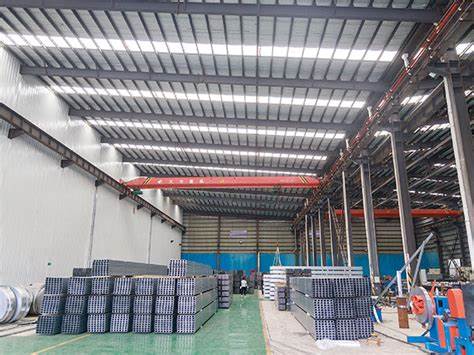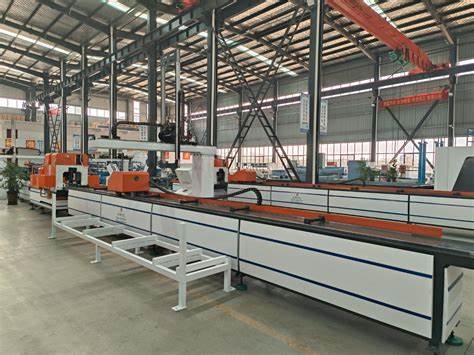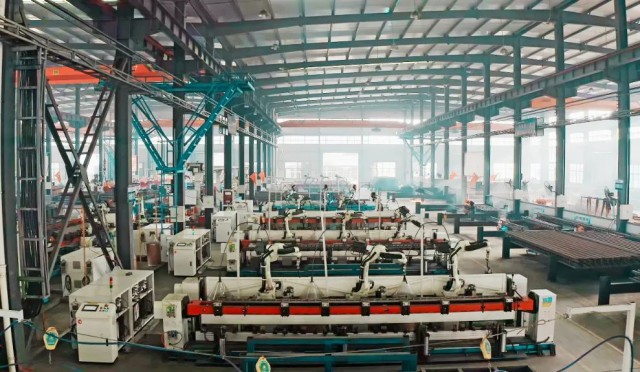As the world pivots toward sustainable energy, photovoltaic (PV) systems are playing a crucial role in the transition. The production of these brackets demands high precision, corrosion resistance, and structural integrity. This is where advanced manufacturing technologies such as laser pipe cutting machines, laser plate cutting machines, pipe bending machines, and laser welding machines come into play. These technologies have revolutionized how PV brackets are fabricated, making the process faster, more accurate, and more cost-efficient.

1. Laser pipe Cutting Machine: Precision at the Core
Traditional sawing or mechanical cutting methods can be slow and imprecise, often requiring secondary processing. This is where laser pipe cutting machines bring transformative benefits.
Key Advantages:
High Precision: Laser pipe cutting machines can achieve cutting tolerances within ±0.1 mm.
Complex Geometries: Laser pipe cutting machines can create intricate cutouts, holes, slots, and notches that would be difficult or impossible with mechanical cutting.
Material Utilization: With optimized nesting and minimal kerf, laser pipe cutting machines reduce material waste, thus lowering production costs.
Typical Workflow:
Material Loading: Raw metal pipes are loaded into the feeding system.
Programming and Nesting: Using CAD/CAM software, cutting paths are generated and optimized for minimal waste.
Discharge and Sorting: Finished parts are sorted and stored for the next phase of processing.
This step ensures that each pipe meets exact specifications, contributing to the modularity and scalability of PV bracket installations.

2. Laser Plate Cutting Machine: Accuracy in Base and Mount Design
These components require both structural strength and precise fitting with the pipe elements. This is where laser plate cutting machines are utilized.
Key Advantages:
Versatility in Thickness: Laser plate cutting machines can process materials ranging from thin aluminum sheets to thick structural steel plates (up to 25 mm or more).
Clean Edges: The thermal cutting process produces burr-free edges, eliminating the need for deburring or secondary processing.
Flexible Design Capabilities: From rectangular base plates to L-shaped brackets, any 2D geometry can be processed quickly.
Batch and Custom Production: The technology of laser plate cutting machine supports both mass production and small-batch customization, essential for varied PV mounting systems (e.g., rooftop, ground, or floating types).
Typical Workflow:
Sheet Loading: Metal sheets are positioned on the laser cutting bed.
Design Import: The system of laser plate cutting machine imports design files for components with precise tolerances.
This phase ensures that all flat components integrate seamlessly with pipe structures in the assembly stage, maintaining the integrity of the overall bracket system.
3. Pipe Bending Machine: Shaping the Framework
This is where the pipe bending machine becomes essential.
Key Advantages:
Automated Precision: CNC-controlled pipe bending machine ensures repeatable accuracy and minimal spring-back.
Material Integrity: Proper bending methods (such as mandrel-assisted bending) reduce the risk of cracks or deformities.
Enhanced Aesthetics and Functionality: Smooth curves of pipe bending machine can improve both the mechanical performance and visual appeal of PV brackets.
Typical Workflow:
Setup and Programming: Bending angles and radii are programmed into the CNC control system.
pipe Insertion: Pre-cut pipes are fed into the bending dies.
Bending Execution: Rollers or hydraulic arms of pipe bending machine apply controlled force to bend the pipe to the desired shape.
Inspection: Each bent component of pipe bending machine is inspected for angular accuracy and surface finish.
The integration of pipe bending machine into the production process allows for more dynamic bracket designs, improving adaptability in different installation scenarios such as carports, agricultural greenhouses, and rooftop systems.
4. Laser Welding Machine: Final Assembly with Strength and Precision
Laser welding machines solve these issues with high-speed, high-precision welding.
Key Advantages:
Minimal Heat Affected Zone (HAZ): Reduced thermal distortion preserves the dimensional accuracy of the assembly.
Strong and Clean Welds: Laser welding machines exhibit high tensile strength and require little to no post-processing.
Automation-Friendly: Seam tracking, robotic arms, and fixtures enable lights-out manufacturing and rapid cycle times.
Compatibility with Multiple Materials: Laser welding machine is effective for stainless steel, aluminum, and galvanized steel—common materials in PV brackets.
Typical Workflow:
Laser Welding Operation: High-intensity laser beams melt and fuse the material along the joint.
Inspection and Quality Control: Laser welding machines are checked for porosity, penetration, and alignment using non-destructive testing if necessary.
Laser welding machine ensures structural stability in harsh outdoor environments where PV systems operate for decades.

Conclusion: Smart Manufacturing for a Greener Future
The production of photovoltaic brackets has evolved from labor-intensive fabrication to highly automated, precision-driven workflows. By integrating laser pipe cutting machines, laser plate cutting machines, pipe bending machines, and laser welding machines, manufacturers can achieve all process.

